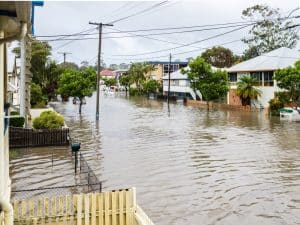
- The Savvy Promise
At Savvy, our mission is to empower you to make informed financial choices. While we maintain stringent editorial standards, this article may include mentions of products offered by our partners. Here’s how we generate income.
Rental stress has been sky-high for Australians over the past few years. The soaring cost of housing is putting pressure on low to middle-income earners, especially in major cities such as Sydney and Melbourne. The issue is particularly acute for single-parent families, low-wage workers and older Australians on fixed incomes.
- More than 42% of all low-income earners are in rental stress
- Greater Hobart continues to be the least affordable capital city in Australia
- Rents are unaffordable to severely unaffordable for singles
- Greater Brisbane experienced the sharpest decline in rental affordability
- Vacant apartments are one of the drivers behind the crisis
- Affordability has not improved much for Adelaide and Perth
Combined with the rising costs of living, job losses and financial insecurity, rental affordability remains a concern – and the crisis is only expected to worsen in 2023. In this report, we reveal the impact on Australians and trends across the country.
Rental stress is most elevated for low-income earners
As of February 2023, more than 640,000 Australian households are under housing stress or homeless. It is forecasted that this figure will grow to almost one million by 2041.
According to a recent report by SGS Economics and Planning, 42% of all low-income households are paying more than 30% of their income on housing. This rises to 47% for households in New South Wales and 58% for Australia’s private rental market.
Severe rental stress is defined as spending 38% to 60% of your income on rent, which puts low-income households at risk.
Singles receiving JobSeeker, pensioners and part-time working parents have an RAI score that ranges from Unaffordable to Extremely Unaffordable. The Rental Affordability Index (RAI) shows they spend 30% to 60% or more of their gross income on rent.
Hospitality workers are also struggling, with rental affordability Moderately Unaffordable to Severely Unaffordable.
Over the past year, rental affordability has declined across Australia for student share houses. It ranges from Moderately Unaffordable to Unaffordable. While the annual incomes of these households have boosted slightly, they still need up to 40% of their income for rent making it increasingly difficult to balance study and work.
Minimum-wage couples, who earn an average gross annual income of $84,510, range from Unaffordable to Acceptable. This means that minimum-wage couples are paying 20% to 38% share of their income on rent.
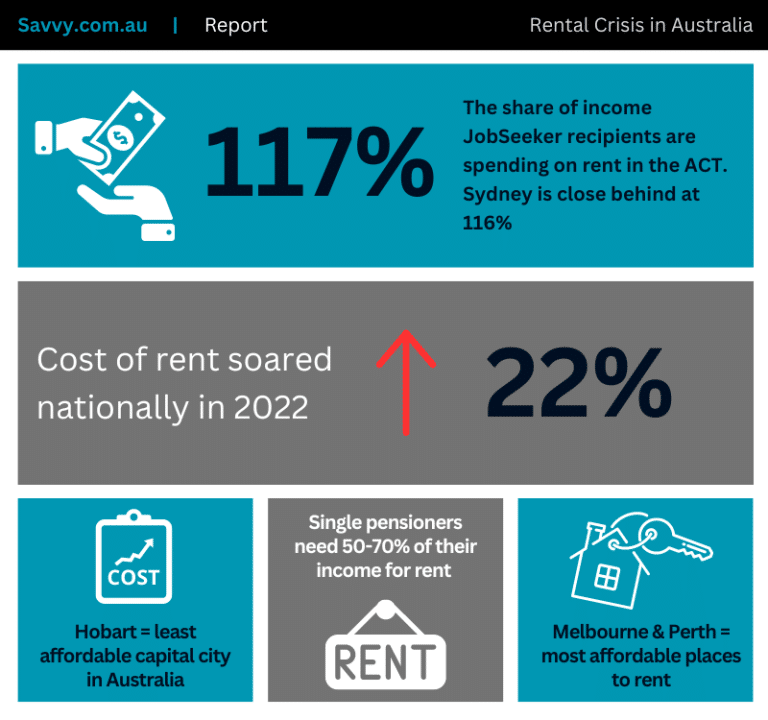
What factors are making rent so unaffordable?
It is clear that tenants are still grappling with unsustainable rent increases. Rental hikes are outpacing wages, leaving no realistic prospect of renting or buying for many individuals. Unaffordable prices are driven by a combination of factors, including population growth, increased demand and a limited supply of rental housing. Additionally, rising property prices and stagnant wages have made it difficult for many people to enter the property market, leading to a growing reliance on rentals.
Compared to a decade ago, there is less social and affordable housing stock available. This is making many low-income earners very reliant on the private rental market where they are forced to pay unaffordable rents.
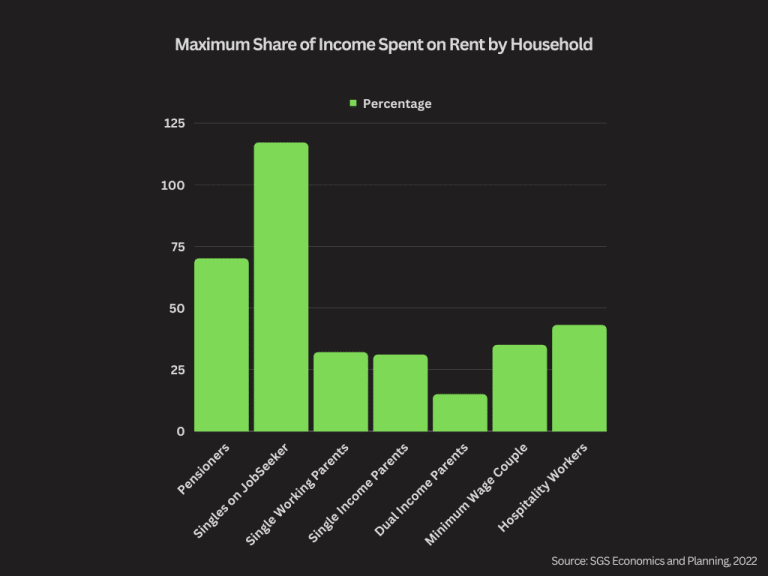
The cost of rent soared nationally by 10.2% in 2022
CoreLogic’s rental report for December shows the harsh reality of rent rises. Amid the tightest vacancy rates on record, rent escalated by 10.2% putting immense financial strain on an already pressure-cooker situation.
This has put 2023 on the back burner when it comes to affordability.
The current market conditions have been closely linked to demographic trends throughout the pandemic when the supply of properties was unable to keep pace with household growth. On top of this, employment changes and a strong return in overseas migrations have added to demand. More renters are also looking for a space of their own rather than share accommodation.
Housing will remain unaffordable for many Australians in 2023. With costs consuming a disproportionately high amount of renters’ income, it is important to note that the RAI only considers rent against income, meaning many households are dealing with additional financial pressures on top of the already-high rental rates.
These extra costs such as utilities, everyday living, childcare and healthcare expenses are considerable. This is especially challenging for single-working parents and dual-income parents.
Lack of rental stock and vacant apartments impacting rental affordability
With rental properties unaffordable and unavailable, the pressure on the market will be exacerbated over the next 12 months.
The lack of rental supply is partly due to investors and natural disasters. In recent years, more apartments are sitting vacant in inner–city areas while investors hold onto their properties for long-term capital gains. This reduces the availability of rentals. Coupled with the lack of new developments, increased immigration and population growth, Australia is tackling another rental crisis.
According to the report, homeowners are competing with investors for available property. Overseas investors are also buying more in Australia. Whether it’s new apartments off the plan waiting to get leased or investors who plan to keep it as a holiday apartment. In Perth alone, one in five houses is sitting empty despite almost 19,000 applicants on a public housing waitlist.
Investors, locally or abroad, have pushed out would-be homeowners, leaving more middle to higher-income households renting for longer than anticipated. This creates a snowball effect on lower-income renters who as a result, face higher rent rises.
On top of this, regional areas experienced several natural disasters last year, limiting rental stock and increasing rates for this year. Regional areas are generally more affordable. But the influx of regional migration has put pressure on the crisis as more people swap capital cities with country living.
Improved affordability leaves a negligible improvement for low-income households
As rental rates for one and two-bedrooms return to pre-pandemic levels, improved affordability for renters in some cities is on the horizon.
For low-income tenants, this recovering affordability is an insignificant development. Households still face severely unaffordable rents in most metropolitan areas.
It is a very minor tangible improvement for renters in Brisbane, Adelaide and Perth too. Rental affordability for these areas has declined significantly in the last two years. Because they were not as impacted by the restrictions, there has not been much of an improvement, especially compared to the rest of the country and pre-pandemic levels.
State-by-state guide
As a result, Brisbane had the sharpest decline in rental affordability which represents a historic low point. By the end of last year, its RAI score had fallen 11%, while Adelaide and Perth fell 6%.
For pensioner couples in particular, Brisbane and Perth are the second least affordable cities behind Sydney and Australian Capital Territory.
Single pensioners are battling Extremely Unaffordable to Severely Unaffordable rents. For the most part, they need 50-70% of their income for rent. This does not include costs associated with ageing, like healthcare and accessing nearby shops, services and transport.
Regional South Australia is the only location with acceptable rents for pensioners, but rising rates in the area prove difficult for all other low-income earners.
For the average rental household in each city, Hobart continues to be the least affordable sinking below the critical threshold. Sydney remains critically unaffordable, while Melbourne is Australia’s most affordable capital with households spending an average of 21% of their income on rent.
Perth follows as the second most affordable, despite the sharp rental increases and decline in affordability over the years. This is a different story for JobSeekers, hospitality workers and pensioners who are being negatively impacted by low vacancy rates and deteriorating affordability.
Greater Queensland is Moderately Affordable for the first time, with the largest decline in RAI score across the country.
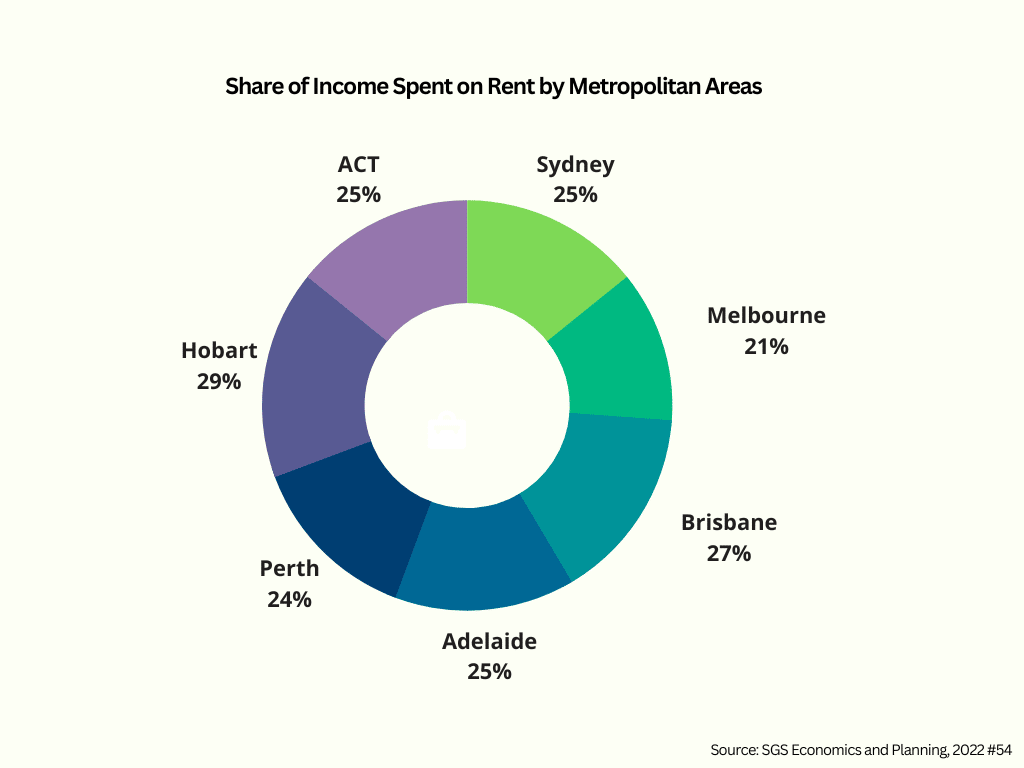
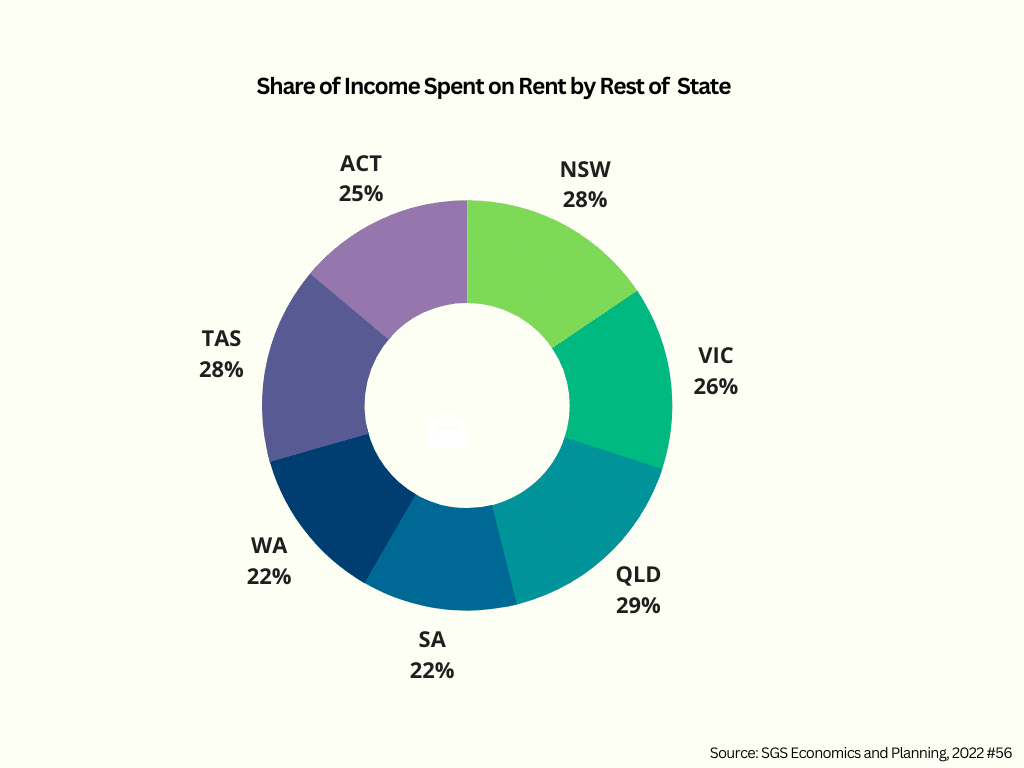
Singles on JobSeeker struggling with severe unaffordability across Australia
Although there has been a recent increase in welfare payments, job seekers have the worst rental affordability, paying 60% or more of their income on rent. In some areas, such as Perth, Sydney and ACT, they are forking out more than 100% making rentals severely unaffordable.
Single part-time working parents on benefits are also in the same boat, however, healthcare and childcare costs have further compounded the financial stress. ACT is the most unaffordable area with renters paying 69% of their income. Victoria and Tasmania are the most affordable at 40-41%.
Dual-income parents spend up to 15% of their income on rent
All regions for parents with two incomes are affordable or better. This is due to the annual household income increasing by almost $4,500. Households in Sydney and ACT pay the highest rent share (15%), while South Australia is the lowest (8%).
Single-income couples with children are not as fortunate but still face Moderately Unaffordable rents. These households can only get affordable rentals in South Australia.
Government support is not enough to ensure safe, secure and affordable housing
While there have been measures aimed at addressing the rental crisis, the gap between the cost of housing and income keeps rapidly widening. The most obvious solution is to build more well-located housing that is affordable for low-income renters. This can be achieved by fast-tracking the supply and resolving conflict between landlords, tenants and agents for a stronger community.
HomelessnessAustralia.org.au, Pre-Budget Submission 2023.
Sgsep.com.au, Rental Affordability Index, November 2022, PDF.
Macrobusiness.com.au, Australia's Rental Crisis to Worsen, 2023.
Brokernews.com.au, Exposed: The Perth Suburbs Where One in Every Five Homes Sits Empty.
7news.com.au, Majority of Increased Rate of Welfare Payments Paid to Bank Accounts on Thursday.
Did you find this page helpful?
This guide provides general information and does not consider your individual needs, finances or objectives. We do not make any recommendation or suggestion about which product is best for you based on your specific situation and we do not compare all companies in the market, or all products offered by all companies. It’s always important to consider whether professional financial, legal or taxation advice is appropriate for you before choosing or purchasing a financial product.
The content on our website is produced by experts in the field of finance and reviewed as part of our editorial guidelines. We endeavour to keep all information across our site updated with accurate information.









